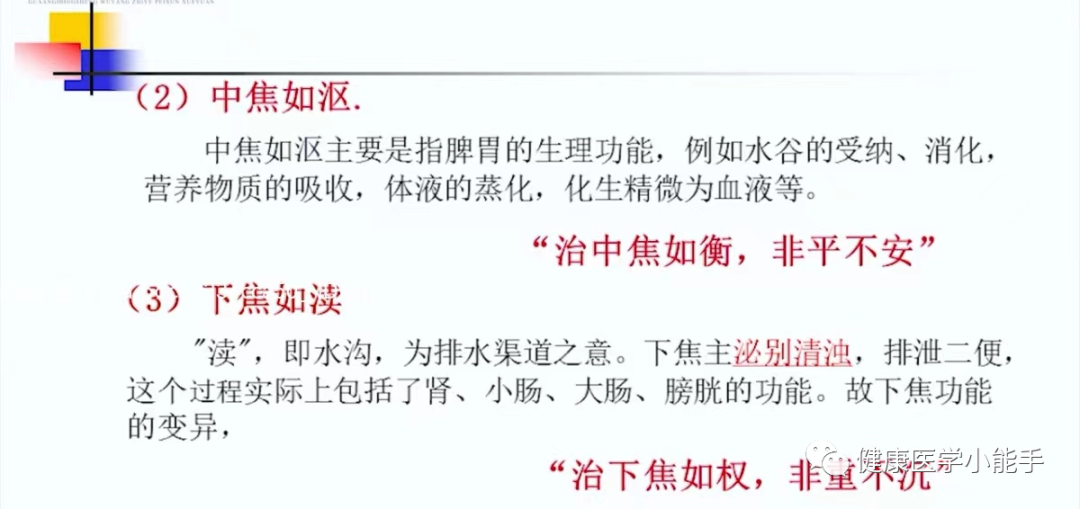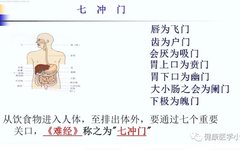Six Fu Organs: Referring to the Gallbladder, Stomach, Small Intestine, Large Intestine, Bladder, and San Jiao, which are primarily hollow organs.
Common Physiological Function: Responsible for receiving, storing, and transforming food and fluids.
Watch the video to learn more.
The Six Fu Organs serve as channels for transformation.
Food and drink must pass through seven gates from entry to exit in the body. The lips are the “Feimen” (Flying Gate), the teeth are the “Humen” (Door Gate), the epiglottis is the “Ximen” (Suction Gate), the upper opening of the stomach is the “Benmen” (Entrance Gate), the lower opening of the stomach is the “Youmen” (Exit Gate), the junction of the small and large intestines is the “Lanmen” (Gate of the Cavity), and the lower extreme is the “Pomen” (Gate of the Soul).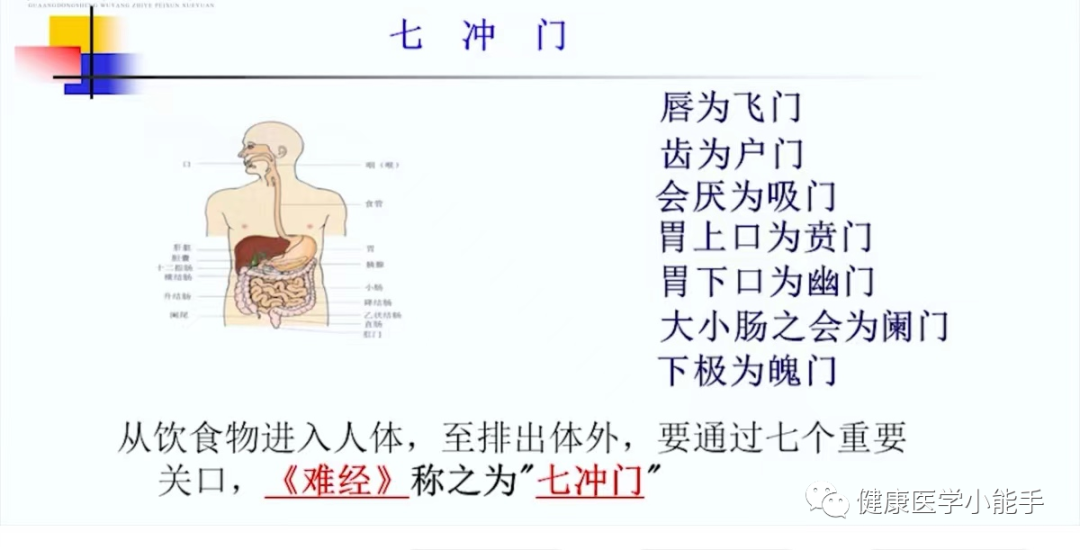
The common physiological characteristics of the Six Fu Organs: They function by facilitating passage and promoting descent.
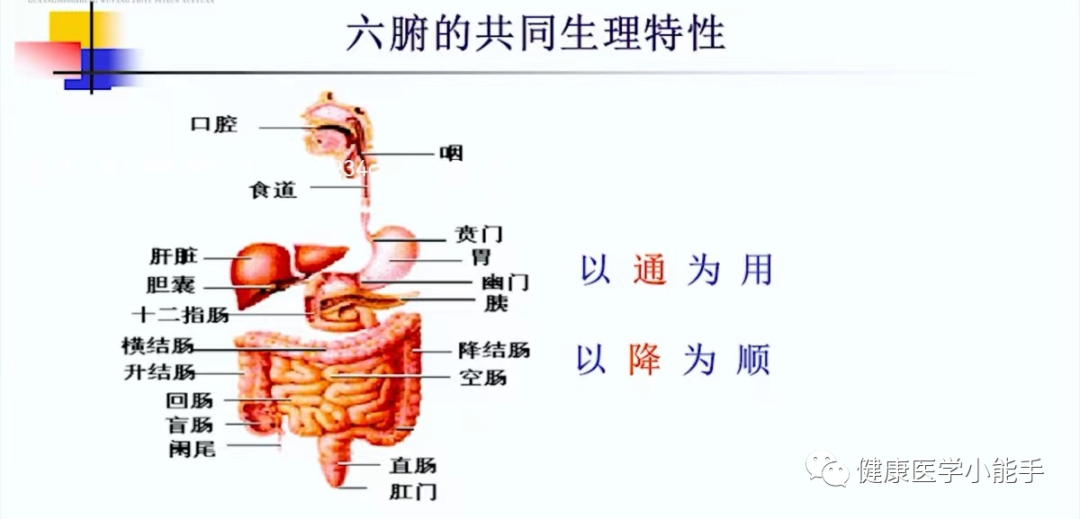
1. Gallbladder
(1) Anatomical Structure of the Gallbladder
Located beneath the right rib cage, attached to the liver’s small lobe, the gallbladder is closely related to the liver.
Structure: A hollow sac-like organ.
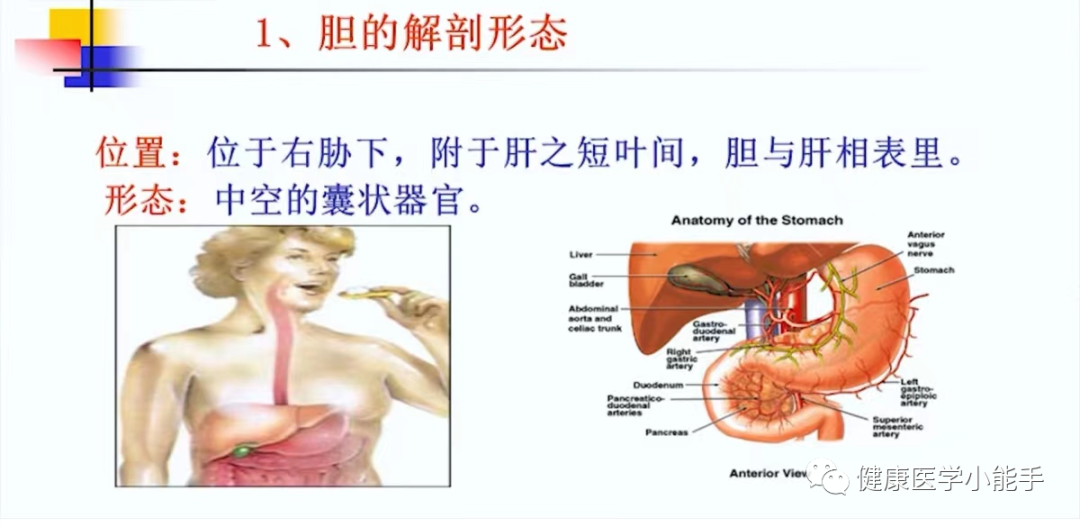
(2) Physiological Functions of the Gallbladder
1. Storage and Excretion
(1) Storage
Bile is produced in the liver and stored in the gallbladder. It is bitter and yellow-green in color, also known as “Essence Juice”; the gallbladder is referred to as the “Palace of Essence”.
(2) Excretion of Bile
Controlled and regulated directly by the liver’s function of dispersing and venting, bile is timely excreted into the intestines (the duodenum’s major papilla), maintaining normal digestive function.
(3) Pathological Changes of the Gallbladder
Due to the close relationship between the liver and gallbladder, if the liver functions normally, bile production is ensured, and bile excretion is smooth, allowing for normal digestion. If the liver is diseased, it affects bile production and excretion, leading to digestive dysfunction.
(1) Obstruction of bile secretion and excretion – Anorexia, abdominal distension, diarrhea.
(2) Damp-heat accumulation in the liver and gallbladder, causing bile to follow an unusual path – Results in jaundice, with a yellow appearance.
(3) Gallbladder Qi stagnation, Qi counterflow – Bitter taste in the mouth, vomiting of yellow-green bitter fluid.
(4) Bile retention – Over time, forms sand and stones (gallstones).
Tips on Jaundice: Damp-heat accumulation or cold damp obstruction in the liver and gallbladder leads to jaundice, resulting in a yellow appearance.

2. Decision-Making
(1) Physiology
The gallbladder is associated with courage and decisiveness, reflecting a person’s bravery; it is the official of righteousness and decision-making.
(2) Pathology
Gallbladder Qi deficiency – Timidity, fear, restless sleep.
Gallbladder heat phlegm disturbance – Palpitations, irritability, and anger.
3. Why is the gallbladder one of the Six Fu Organs and also classified as a Unique Organ?
As one of the Six Fu Organs, it is a hollow organ that stores bile and promotes digestion.
The bile contained within is considered essence and does not directly receive food and fluids, thus it belongs to the Unique Organs.
2. Stomach
(1) Anatomical Structure of the Stomach
Located below the diaphragm, connecting the esophagus above and the small intestine below, it is a curved, sac-like organ (mostly in the main rib area, with part in the upper left abdomen).
(2) The Stomach has Two Gates and Three Sections
Two Gates: Connecting the esophagus above and the small intestine below.
Stomach Sections:
Upper Section – Upper Jiao (including the Entrance Gate).
Middle Section – Middle Jiao, which is the body of the stomach.
Lower Section – Lower Jiao (enclosing the Exit Gate).
(3) Physiological Functions of the Stomach
1. Main Function of Receiving Food and Fluids
Receiving: Accepting and containing food and drink.
Food enters through the mouth and passes through the esophagus to be contained in the stomach, which is referred to as the “Great Warehouse”, “Sea of Food and Fluids”, and “Sea of Qi and Blood from Food and Fluids”.
Receiving is the prerequisite for digestion and fermentation.
2. Main Function of Fermenting Food and Fluids (Initial Digestion)
This is the process where food undergoes initial digestion in the stomach, transforming into chyme.
3. Pathological Significance
Failure in receiving: Symptoms include loss of appetite, abdominal distension, and discomfort in the stomach area.
Failure in fermentation: Symptoms include stomach pain and belching of foul-smelling food.
(4) Physiological Characteristics of the Stomach
1. The Stomach is the Source of Qi
The stomach’s function of receiving and fermenting food, combined with the spleen’s transportation function, is referred to as “Stomach Qi”.
Traditional Chinese Medicine emphasizes that “Human life is based on Stomach Qi”.
With Stomach Qi, one lives; without it, one dies.
As people often say, the Middle Jiao is the source of postnatal Qi and blood production. Without Stomach Qi, other organs cannot receive nourishment, leading to death; retaining even a little Stomach Qi allows for a bit of vitality.
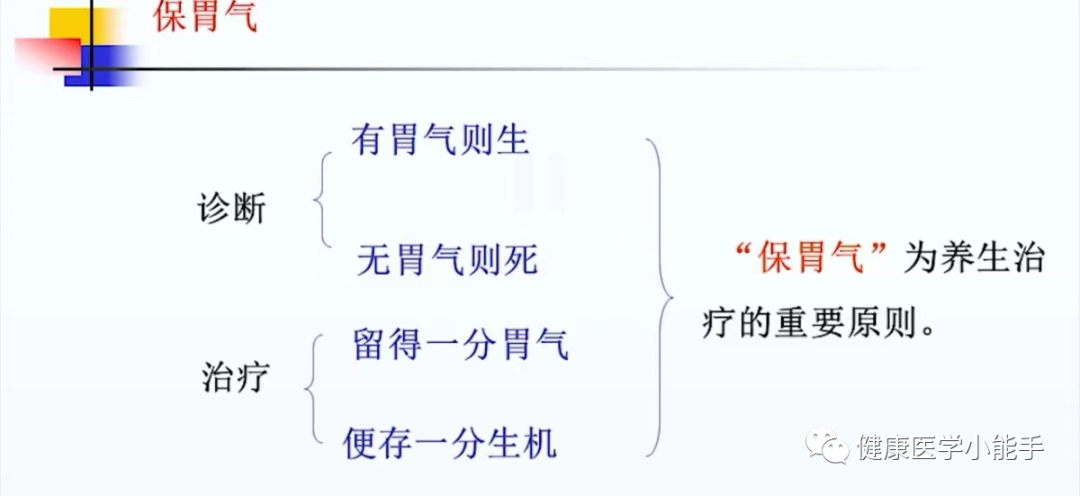
2. The Stomach Governs Descent
Stomach Qi descends smoothly and harmoniously.
Food enters the stomach, undergoes fermentation, and then moves into the small intestine for further digestion and absorption. The stomach’s descent is a prerequisite for continued receiving.
(1) Descending Turbidity is a Condition for Continued Reception
If the stomach does not harmoniously descend, food will stagnate, leading to symptoms such as stomach pain and loss of appetite.
Stomach Qi counterflow – nausea, vomiting, belching, and hiccups.
Additionally, if Stomach Qi does not descend, it will affect the spleen’s ascending and descending functions.
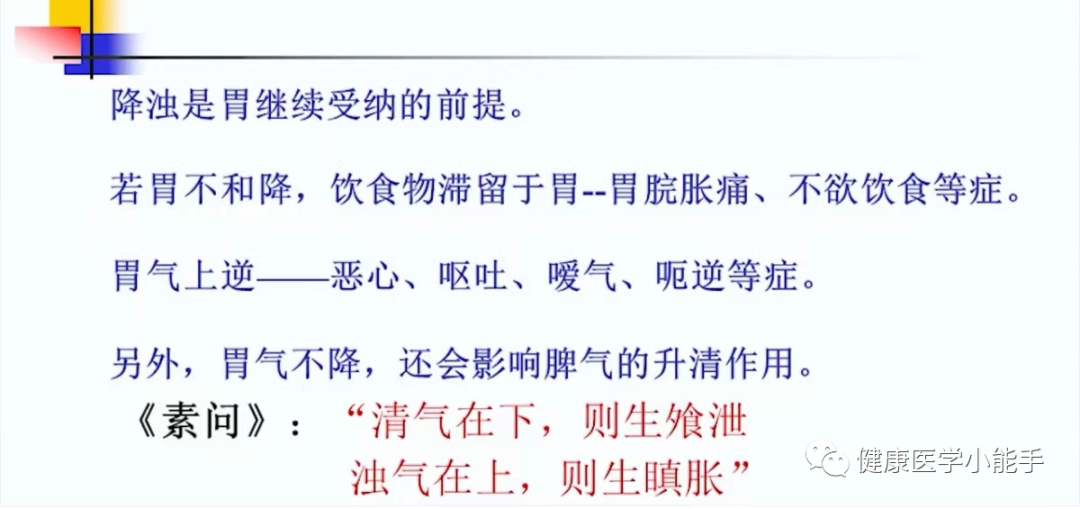
(2) The Stomach Prefers Moisture and Dislikes Dryness
The stomach is considered dry earth, relying on moisture to alleviate dryness; thus, it prefers moisture and dislikes dryness.
How is this reflected?
This is evident in the smooth descent of Stomach Qi, which benefits the nourishment of Stomach Yin, allowing for proper descent.
This reflects the balance between the stomach’s preference for moisture and the spleen’s preference for dryness, ensuring dynamic equilibrium between the spleen and stomach.
Patients with stomach issues should eat smaller, more frequent meals to preserve Stomach Qi.
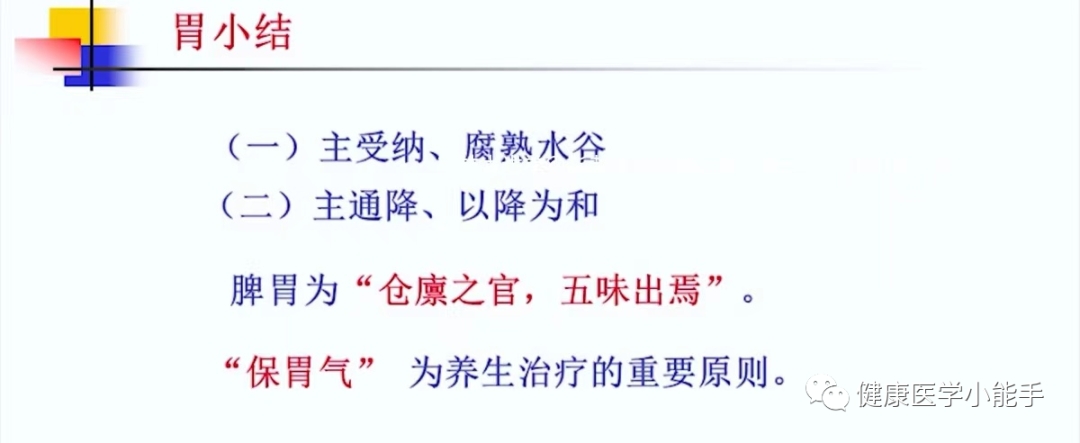
3. Small Intestine
(1) Anatomical Structure of the Small Intestine
Location: Located in the abdomen, connecting the stomach (at the pylorus) above and the large intestine (at the cecum) below.
Shape: A coiled, tubular organ.
The small intestine is the longest segment of the digestive tract, measuring 5-7 meters when fully extended.
(2) Physiological Functions of the Small Intestine
Main Function of Receiving and Transforming Food
Main Function of Separating Clear from Turbid
1. Main Function of Receiving and Transforming Food
(1) Receiving: Refers to the act of containing food.
The small intestine receives food that has been initially digested by the stomach, thus it serves as the container for the stomach’s contents.
(2) Transforming: Refers to the processes of change, digestion, and transformation.
The small intestine’s transforming function further digests and absorbs the food that has been initially digested by the stomach; “The small intestine is the official of receiving and transforming.”
(2-1) The small intestine is the primary site for digestion and absorption in the body.
Several guarantees ensure this:
First, the duration is long; food entering the small intestine requires 3-8 hours for digestion.
Second, the digestive juices in the small intestine are the richest, including not only small intestinal fluid but also pancreatic juice and bile secreted by the liver, all of which reach the small intestine to participate in thorough digestion and absorption.
Additionally, the walls of the small intestine are lined with numerous circular folds, villi, and microvilli that further enhance digestion and absorption.
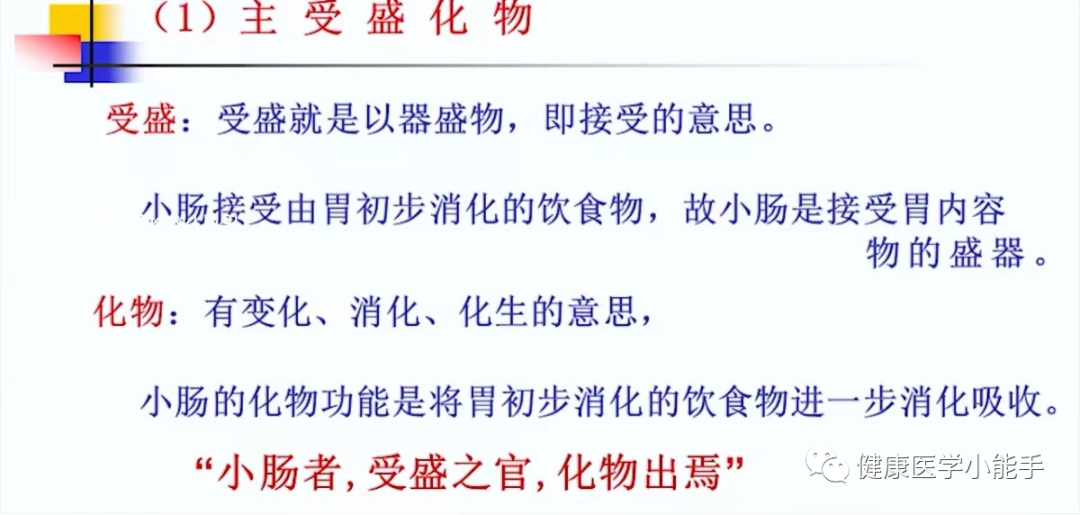
2. Main Function of Separating Clear from Turbid
“Clear” refers to various refined substances, while “Turbid” primarily refers to the residual waste after digestion.
(1) Separating clear from turbid, each following its path, allows for the absorption of refined substances, which are then transported by the spleen throughout the body.
(2) Pushing the food residues down to the large intestine.
(3) Absorbing a large amount of water, participating in fluid metabolism, hence it is said that “The small intestine governs fluids.”
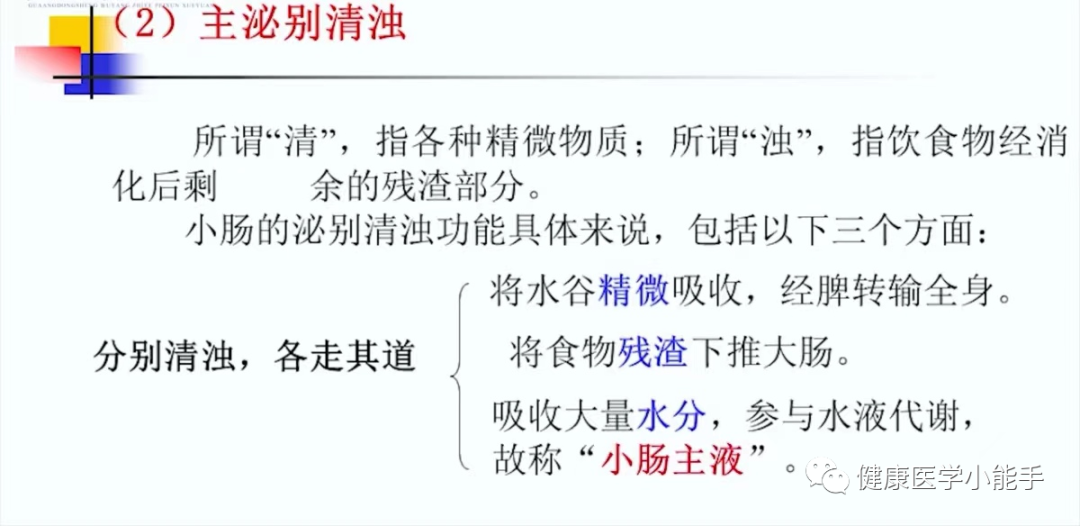
3. Pathological Significance
If the small intestine is diseased, it not only causes digestive dysfunction, leading to symptoms such as abdominal distension and pain, but also affects the excretion of urine and feces.
Failure to separate clear from turbid results in mixed water and food – leading to short urination and loose stools.
In clinical practice, treating diarrhea often employs the method of “promoting urination to solidify stools.”
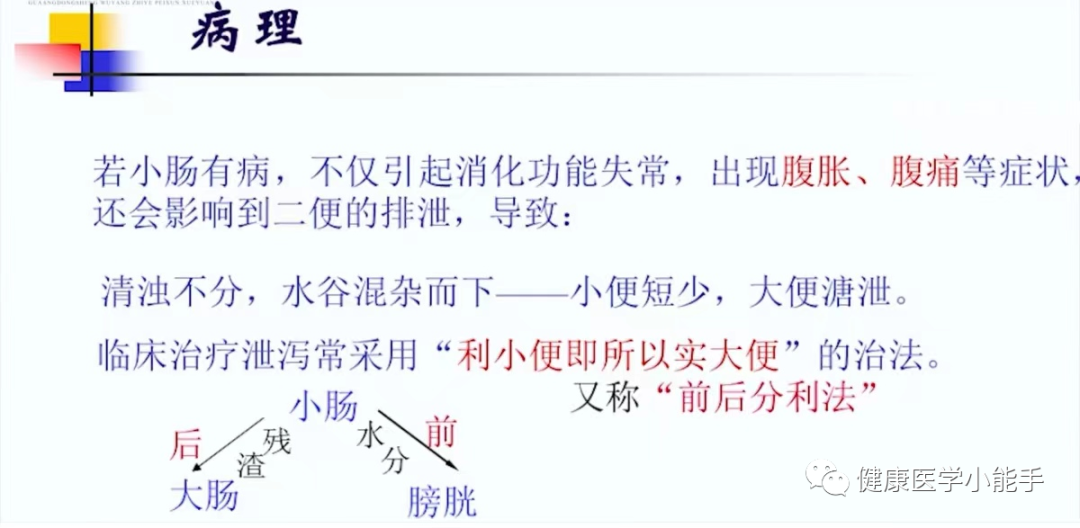
4. Large Intestine
(1) Anatomical Structure of the Large Intestine
Located in the abdomen, connecting the small intestine above and the Pomen below.
Shape: Coiled and folded.
The large intestine surrounds the small intestine, extending from the cecum to the ascending colon, transverse colon, descending colon, sigmoid colon, rectum, and anal canal.

(2) Physiological Functions of the Large Intestine
1. Main Function of Conducting Waste
Transmitting waste and absorbing moisture is an extension of the stomach’s function of descending turbidity.
This process transforms waste into feces for excretion, relying on the kidneys’ normal function of Qi transformation.
“The large intestine is the official of conduction, from which transformation occurs.”
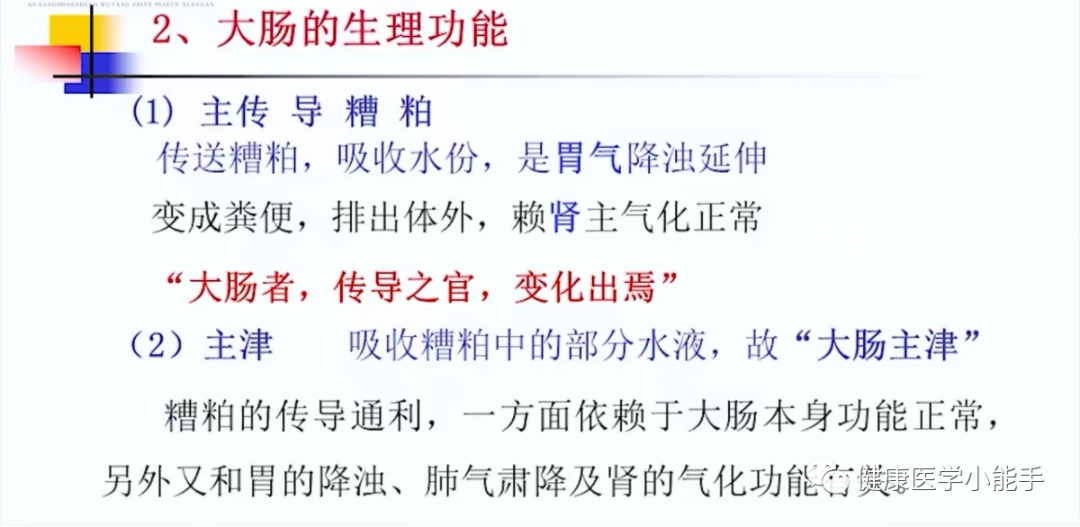
2. Main Function of Fluids
Absorbing some moisture from the waste, hence “The large intestine governs fluids”.
The smooth conduction of waste relies on the normal function of the large intestine, as well as the stomach’s ability to descend turbidity, the lung’s ability to clear, and the kidney’s Qi transformation function.
3. Pathological Phenomena of Large Intestine Dysfunction
Large intestine deficiency and cold, unable to absorb moisture – Bowel sounds, abdominal pain, and loose stools.
Large intestine excess heat, moist intestines – Dry and hard stools that are difficult to pass.
Damp-heat accumulation in the large intestine – Abdominal pain, dysentery with pus and blood, urgency and heaviness in the lower abdomen.
5. Bladder
(1) Anatomical Structure of the Bladder
Located in the lower abdomen, beneath the kidneys and in front of the large intestine (rectum), the bladder is closely related to the kidneys.
Shape: A sac-like organ, oval when full and conical when empty.
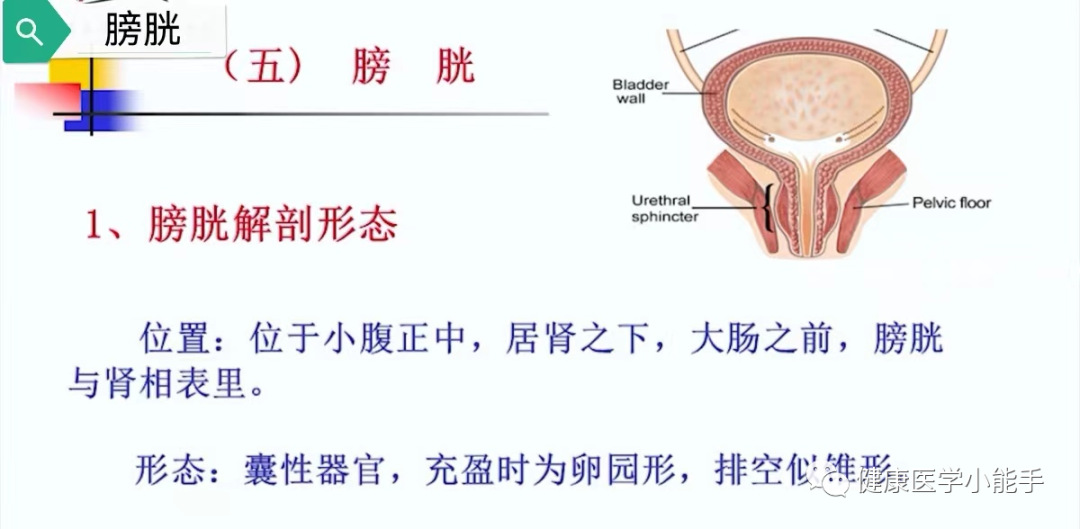
(2) Physiological Functions of the Bladder
(1) Storing urine, utilizing the water after the body has used it, and transporting it down to the bladder.
(2) Excreting urine; when the urine reaches a certain volume, it is expelled through Qi transformation.
“The bladder is the official of the capital city, storing fluids, and can expel them through Qi transformation.”
(3) Physiological Characteristics of the Bladder
1. Physiological Characteristics – The Kidney Governs the Opening and Closing of the Bladder
The bladder’s functions of storing and expelling urine rely entirely on the kidney’s Qi transformation and retention functions; bladder Qi transformation is essentially a function of the kidney’s Qi transformation.
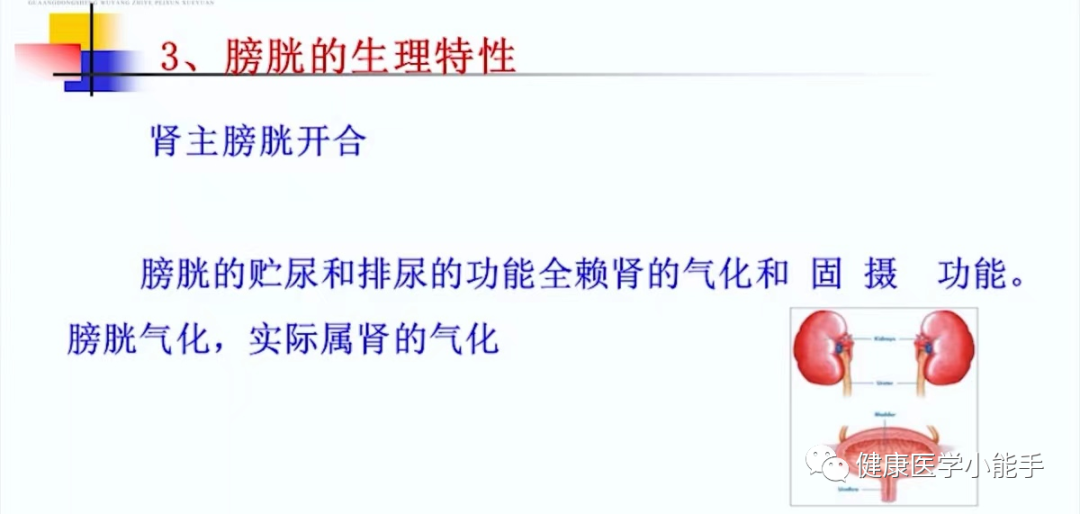
2. Pathological Characteristics
Disruption of Qi transformation – Difficulty urinating, low urine output, or even urinary retention.
Loss of bladder control – Frequent urination with large volumes, or even incontinence.
Damp-heat toxins invading the bladder – Urgency and pain during urination, and painful urination.
6. San Jiao
(1) Structure and Form of San Jiao
There is no definitive conclusion regarding the specific form and location of San Jiao; it can be summarized into two main understandings.
1. A large organ located in the thoracic and abdominal cavities
It forms a channel of communication between the organs and the spaces within the organs, being the largest among the organs, referred to as the “Lonely Palace”.
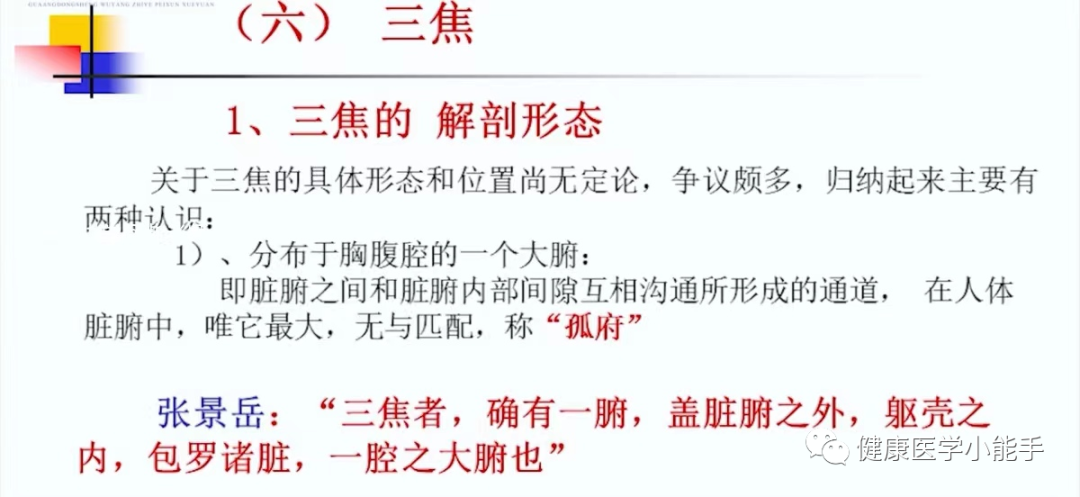
2. The collective term for the Upper, Middle, and Lower Jiao
Upper Jiao – The area above the diaphragm, including the heart and lungs.
Middle Jiao – The area from below the diaphragm to the navel, including the spleen, stomach, liver, and gallbladder.
Lower Jiao – The area below the navel, including the kidneys, bladder, large intestine, and small intestine.
(2) Main Physiological Functions of San Jiao
Transporting Yuan Qi
Regulating Water and Fluids
Transporting Food and Fluids
1. Transporting Yuan Qi
Yuan Qi originates from the Lower Jiao, derived from the essence of the kidneys; however, the movement of Yuan Qi relies on the pathways of San Jiao to distribute and reach the entire body, thus stimulating the functional activities of various organs, making San Jiao the master of all Qi.
2. Regulating Water and Fluids
San Jiao has the function of unblocking water pathways and regulating the movement of fluids, serving as one of the organs that regulate fluid metabolism.
“San Jiao is the official of decision-making, from which water pathways emerge.”
3. Transporting Food and Fluids
San Jiao assists in distributing refined substances and excreting waste.
Upper Jiao (Heart and Lungs) – Function of distributing refined substances.
Middle Jiao (Spleen, Stomach, Liver, and Gallbladder) – Function of digesting, absorbing, and transporting refined substances from food and fluids.
Lower Jiao (Kidneys, Bladder, Large Intestine, and Small Intestine) – Function of excreting feces and urine.
(3) Physiological Characteristics of San Jiao
1. Upper Jiao is like Mist
This refers to the Upper Jiao’s role in dispersing refined substances and defensive Qi, akin to mist and dew nourishing the skin, hair, and all organs and tissues. Thus, the Upper Jiao’s function reflects the Qi transformation and distribution of the heart and lungs, relating to the distribution of nutrients such as Qi, blood, and body fluids.
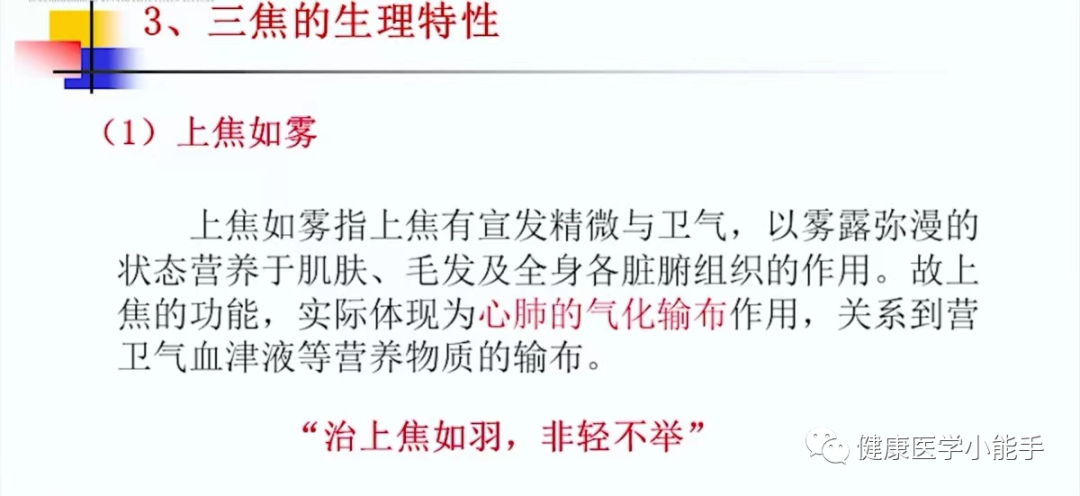
2. Middle Jiao is like Fermentation
This refers to the physiological functions of the spleen and stomach, such as receiving, digesting food, absorbing nutrients, and transforming body fluids into blood.
3. Lower Jiao is like a Drain
“Drain” refers to a water channel, indicating the pathway for excretion; the Lower Jiao governs the separation of clear from turbid and the excretion of urine and feces. This process includes the functions of the kidneys, small intestine, large intestine, and bladder.
